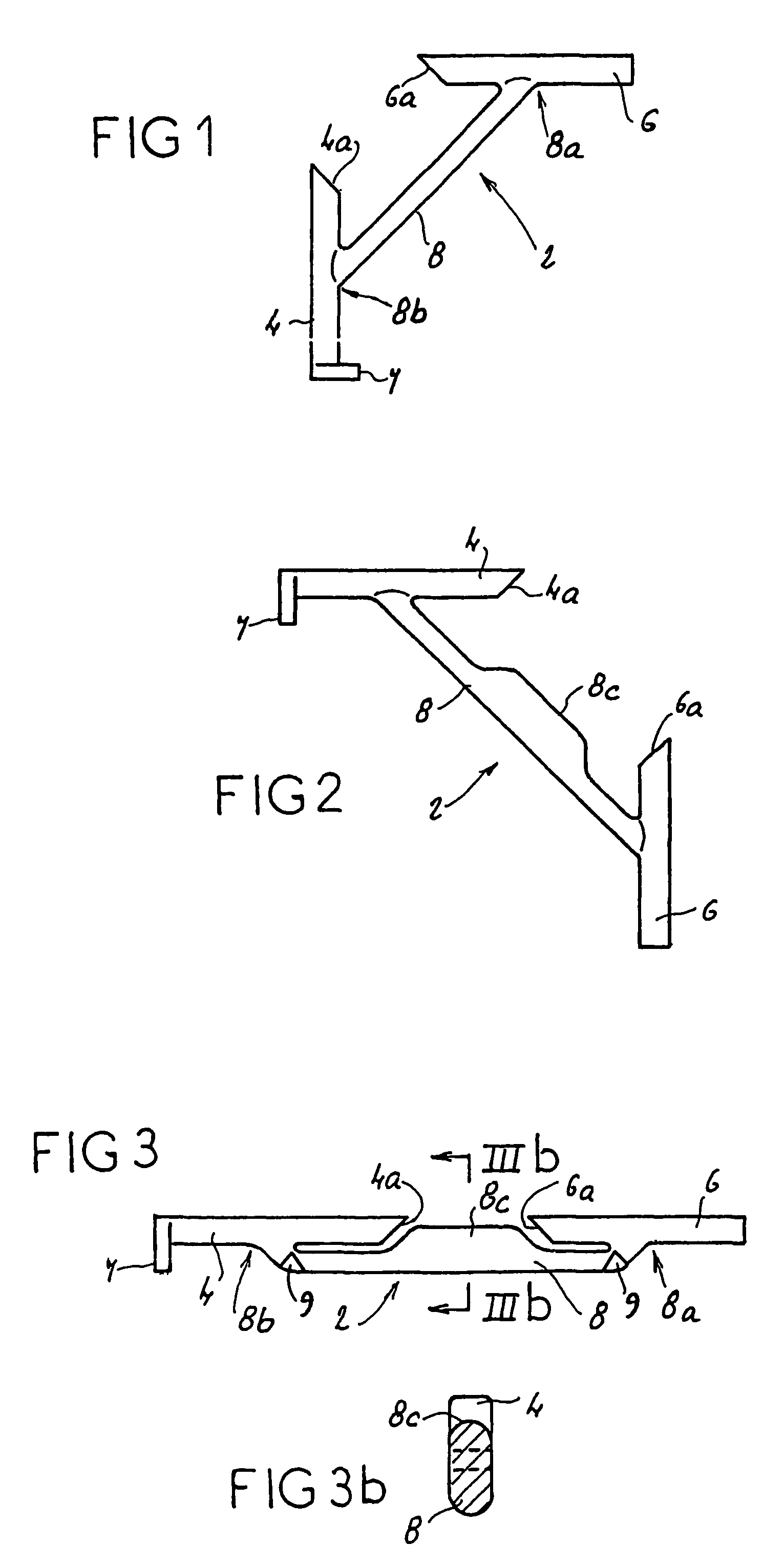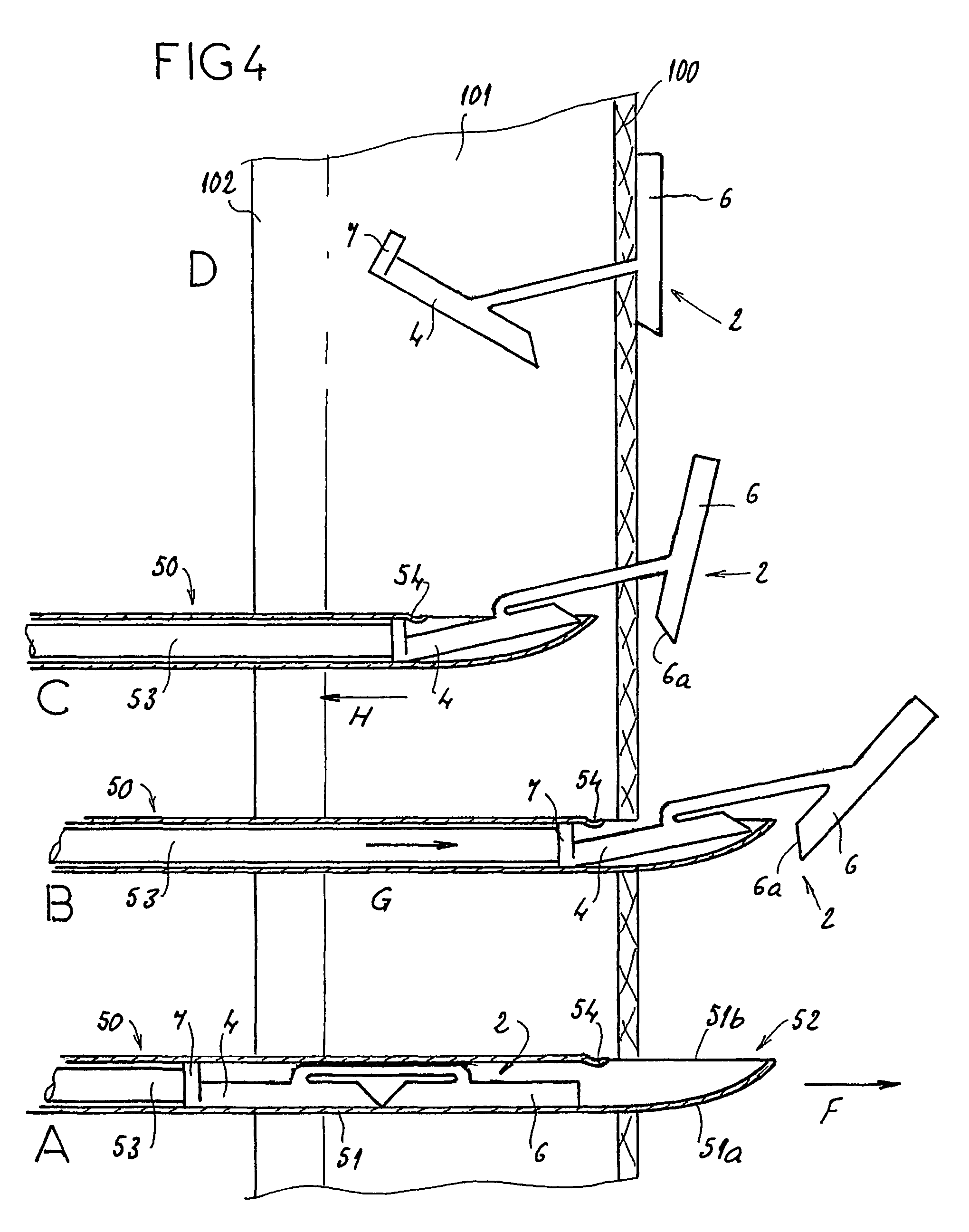Fastener for fixing a prosthesis, and device for delivering this fastener
a technology for fixing prostheses and fasteners, which is applied in the direction of prosthesis, prosthesis, application, etc., can solve the problems of unfavorable meniscus repairing, lack of inability to ensure intimate contact of prosthetic components, so as to achieve the effect of increasing traction
- Summary
- Abstract
- Description
- Claims
- Application Information
AI Technical Summary
Benefits of technology
Problems solved by technology
Method used
Image
Examples
Embodiment Construction
[0040]FIG. 1 shows, in the mold-release configuration, a fastener 2 comprising an anchoring element 4 and an immobilizing element 6 connected via a linking rod 8.
[0041]The latter is arranged between an intermediate point of connection 8b to the anchoring element 4 and an intermediate point of connection 8a to the immobilizing element 6.
[0042]According to FIG. 2, again in the mold-release configuration, the intermediate rod 8 has a bulge 8c substantially at its center. This bulge 8c consists of an excess thickness of material, of limited length relative to the length of the rod 8, and oriented and disposed only on the top of the core of the rod 8, and inside the fastener 2 in the tubular configuration of maximum stress shown in FIG. 3. As this figure shows, in the tubular configuration the bulge 8c fills or occupies the gap left free between the proximal end of the anchoring element and the distal end of the immobilizing element.
[0043]The fasteners 2 shown in FIGS. 1 and 2 have a con...
PUM
 Login to View More
Login to View More Abstract
Description
Claims
Application Information
 Login to View More
Login to View More - R&D
- Intellectual Property
- Life Sciences
- Materials
- Tech Scout
- Unparalleled Data Quality
- Higher Quality Content
- 60% Fewer Hallucinations
Browse by: Latest US Patents, China's latest patents, Technical Efficacy Thesaurus, Application Domain, Technology Topic, Popular Technical Reports.
© 2025 PatSnap. All rights reserved.Legal|Privacy policy|Modern Slavery Act Transparency Statement|Sitemap|About US| Contact US: help@patsnap.com



